|
            
Tetlow editors, authors and illustrators
The dates, where shown, are the dates of first publication. Please let me know of any additions
or amendments which should be made to this list.
|
|
Finkel,
George, Illustrated by George Tetlow
|
|
1967
|
The Long Pilgrimage
|
|
1967
|
Twilight Province
|
|
|
Hawker, Ruth, Illustrated by George Tetlow
|
|
1967
|
An Emu In The Fowl Pen
|
|
Synopsis: Novel set on a sheep station in outback South
Australia.
|
|
1977
|
Growing Up In The Outback
|
|
|
Kingsley, Charles, Edited by John Tetlow
|
|
1894
|
The Heroes; Or, Greek Fairy Tales For My Children
|
|
|
Lee, Jennette
|
|
1909
|
Simeon Tetlow’s Shadow
|
|
|
Litton, R. B. & Tetlow R. J.
|
|
1978
|
A Landscape Inventory Framework:Scenic Analyses Of The Northern
Great Plains
|
|
1974
|
Water and Landscape: An Aesthetic Overview of the Role of Water in
the Landscape
|
|
Publisher:
Emphasizing the aesthetic aspects of fresh
water in the landscape, this book explores the contribution of water to
the environments of recreation and everyday life. To identify the values
of water in this role, a classification framework for the visual landscape
is developed for native characteristics and these are considered together
with man-made changes.
|
|
|
Lumbers, Eugene, Illustrated by George Tetlow
|
|
1975
|
A Taste for Blue Ribbons
|
|
|
Maddison, David; Tetlow, Christopher; Wood, Graham
|
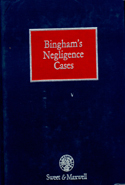 |
1996
|
Bingham’s Negligence Cases
|
|
|
|
|
Tetlow, Bruce; Alling,
Jill; Mead, Peggy (Editors)
|
|
1976
|
Lynchburg College: Argonaut 1976
|
|
|
Tetlow, Edwin
|
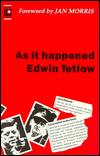 |
1990
|
As It Happened: A Journalist Looks Back
|
|
Publisher:
A seasoned British journalist who worked on both sides of the Atlantic
recounts some of his most interesting and exciting assignments, covering
his war service as a special correspondent with the Royal Navy, as well as
his duty in the North African and Italian campaigns. Includes close-ups of
Winston Churchill, General Montgomery, the Duke of Windsor, Nikita
Krushchev, Fidel Castro, and Presidents Eisenhower, Kennedy, and Nixon.
|
|
|
1996
|
Eye on Cuba - A Masterly Account of Successive Stages of a
Disintegrating Revolution
|
|
|
1974
|
The Enigma of Hastings
|
|
|
|
Synopsis:
A nice little book about the Battle of Hastings
and its political and military context. Quite an amazing series of
events, chief among them, Harold’s victory over Hardrada and
Tostig at Stamford Bridge just before William’s invasion. Tetlow
is very sceptical about William’s claim on the English throne,
arguing that most of it is simply Norman propaganda.
|
|
|
1970
|
The United Nations: The First 25 Years
|
|
|
Tetlow, Elisabeth Meier
|
|
1983
|
Partners in service : toward a Biblical theology of Christian marriage
|
|
|
1996
|
The Spiritual Exercises of St. Ignatius Loyola : A New Translation
|
|
|
1980
|
Women and Ministry in the New Testament : Called to Serve
|
|
|
Tetlow, Eric
|
|
2000
|
R. K. Cole collection of hotel records : surname records compiled by
Eric Tetlow
|
|
|
|
Publisher:
Eric Tetlow, volunteer at the State Library
of Victoria has completed an important indexing project
resulting in the R K Cole Hotel Records: Surname Index. There
are four volumes that make up the 'Surname Index' of 21,800
entries. Each of these volumes list names corresponding to those
recorded in volumes 1 (in three parts), 2, 3, and 4 of the Cole
Hotel Records listed below, located at G 994.5 C67H in the
library's Genealogy Centre.
Robert Kerr Cole was born in the Melbourne
suburb of Malvern in 1883 to father William and mother, Jane
Patterson. He died, age seventy-eight at Canterbury on 14 March
1961. Mr Cole was a well known identity in the brewing world of
Victoria, joining Carlton and United Breweries in 1906 and
spending all his working life at the Victorian plant. For many
years he was the Assistant Brewer to his brother, 'Gus', Head
Brewer. He was a member of the Victorian Historical Society,
taking a particular interest in the history of the brewing
industry and hotels of Melbourne and Victoria. Before and after
his retirement in 1951, he contributed a number of articles to
the Carlton and United Breweries journal, What's Brewing.
The Australian Manuscripts Collection of the
State Library of Victoria received his collection of papers and
books, donated by his wife, in June 1963. These original hand
written volumes of the Robert K Cole Collection of Hotel Records
commonly known as Cole Hotel Records and some transcripts are
still located in the Australian Manuscripts Collection (MS
7592).
The records consist principally of
information about hotels throughout Melbourne, suburbs and
country Victoria. The information, covering the years
c1841-1949, though not exhaustive, was gathered by Robert Cole
from various sources such as post office directories and
newspaper notices. Each volume contains the name of the hotel
and the licensee or owner, together with the years of license,
however, there are many references to people who were not
licensees, for example, architects and residents whose funeral
left from the hotel. All of these names have been indexed along
with the licensees.
A project to photocopy the original volumes
held by the Australian Manuscripts Collection for inclusion in
the library's Genealogy Centre was initiated a number of years
ago, however, the project was never completed.
Volumes of photocopies resulting from the
photocopying project are:
Volume 1: (in three parts): City of Melbourne
hotels. Photocopy of transcript. Arranged alphabetically by
street names.
Volume 1: City of Melbourne hotels. Photocopy
of index cards. Arranged alphabetically by hotel name.
Volume 1: Melbourne suburban hotels. Index to
photocopy of original manuscript. Main arrangement within the
body of the volume is alphabetical by name of hotel. The page
numbers given in these entries refer to pages in the photocopy
of original manuscript volume mentioned below. A list of the
suburbs included (in no apparent order) and page ranges is
included at the front.
Volume 2: Melbourne suburban hotels.
Photocopy of original manuscript. Northern and Western suburbs.
Arranged by name of suburb (no apparent order). A list of suburb
names and page ranges is located at the front.
Volume 3: Melbourne suburban hotels.
Photocopy of transcript. Southern suburbs. Same arrangement as
volume 2 although this volume contains references to different
suburbs.
Volume 4: Melbourne suburban hotels.
Photocopy of transcript. Northern and eastern suburbs. Same
arrangement as volumes 2 and 3, although this volume contains
references to different suburbs.
Volume 5: Victorian country hotels. Photocopy
of transcript. Aberfeldy to Carrum. Arranged by name of country
town (no apparent order). A list of country town names and page
ranges is located at the front.
Volume 6: Victorian country hotels. Photocopy
of transcript. Arranged alphabetically by town name from Cashel
to Echuca only.
This Index will be an invaluable resource for
anyone undertaking research on Victorian hotels.
Grant Hamston (Ancestor Vol. 25 No. 5,
March 2001, Pages 30, 31)
|
|
|
Tetlow, Henry
|
|
1940
|
On Medlock Farm
|
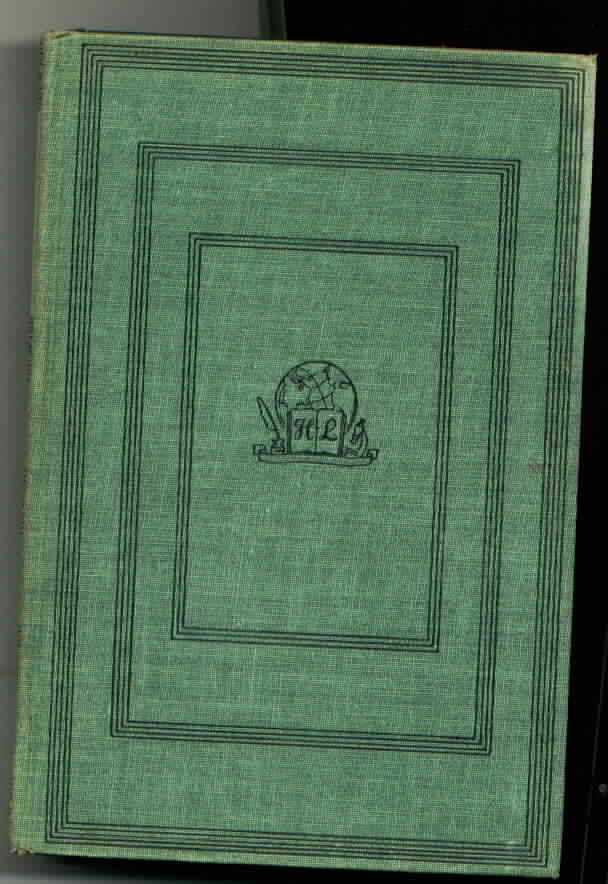 |
1940
|
We Farm For A Hobby And Make It Pay
|
|
Synopsis: The amusing but factual record of a business
man who moved to the country to reduce expenses - while still keeping
his job in a city office.
|
|
|
Tetlow, Henry, Bob Brown, Ruth Kennell & Milly
Bennett, John Hemphill, George Milburn, James Stevens, Lloyd Lewis, Joel
Sayre
|
|
1931
|
The American Mercury December 1931: The Twlight of
Big Business, National Festival: G.W. 1732-1932, They all came to MO
|
|
|
Tetlow, John & Goss, Anthony
|
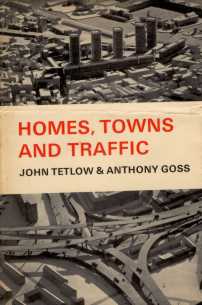
|
1965
|
Homes, Towns and Traffic
|
|
|
Publisher:
When it was first published in 1965, Homes,
Towns and Traffic established itself as one of the
most imaginative and lucid accounts of the aims and achievements of
present-day planning. For this new edition the authors have very
substantially revised the text, bringing it up to date and widening
the scope to include the extension of town planning principles into
the fields of regional planning.
'Of the many books and reports on post-war
housing in Britain, this is certainly one of the most sensible and
informative. It is sensible in its cool and thoughtful judgements on
the achievements of the New Towns and of recent proposals for urban
redevelopment. These judgements are free of propaganda for
particular solutions which are a feature of so much planning
literature. The book is informative by reason of its full account of
the influences and executed schemes . . . which have been
significant for the development of towns in the last twenty years;
and also by reason of the illustrations, particularly the clear
drawings in black and white which so admirably support the text.' Lord
Holford, Cambridge Review
'Should be read by anyone who is responsible for
planning a new town or modifying an old one.' The Director
Anthony Goss is Professor of Urban Design in the
University of Wales Institute of Science and Technology. John Tetlow
is a consultant architect and town planner. Two years ago he
designed a new town for the Government of East Pakistan.
|
|
|
Tetlow, John A.M.
|
|
1884
|
A Progressive Series of Inductive Lessons in Latin
|
|
|
1893
|
Vergil's
Aeneid
|
|
|
Tetlow, John Dawe
|
|
1989
|
The Tetlows of Hollingwood, Oldham (Private printing)
|
|
|
Tetlow, Joseph A.
|
|
1985
|
A Dialogue On The Sex Maturing Of Celibates
|
|
|
1989
|
Choosing Christ in the World : Directing the
Spiritual Exercises of St. Ignatius Loyola According to Annotations
Eighteen and Nineteen : A Handbook
|
 |
1987
|
Ignatius Loyola: Spiritual Exercises
|
|
|
Synopsis:
A popular presentation of the life and writings of Ignatius Loyola,
founder of the Jesuits and author of the famous Spiritual Exercises.
Publisher:
|
|
1988
|
Manna,
a Desert of Busyness : Advent Sunday Scriptures
|
|
|
Tetlow, Karin
|
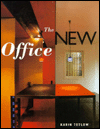 |
1996
|
New Office: Designs for Corporations, People & Technology
|
|
Publisher: A
substantive resource for designers and their business clients, The New
Office presents a new genre of office design, the workplace of the '90s.
Through detailed text and more than 200 color images by leading
international photographers, this volume reveals its many creative
expressions from the slick smart boldness of the office of worth magazine
and the sand bag conference room of Martin/Bastian to the painstaking
analysis of the new hoteling environment for Ernst & Young.
|
|
|
Tetlow, L.D.
|
|
1998
|
Black Day in No-Name
|
|
Publisher: Caleb
Black, preacher and part-time bounty-hunter, is tempted to turn in the
outlaws he knows are in the ramshackle buildings he comes across. The
reward money is a great incentive and he goes into partnership with two
other black men and another bounty-hunter, Gus Spencer. When the outlaws
get wise to Caleb's scheming. Gus is badly beaten and the other three
partners seem destined for Boot Hill.
|
|
|
1994
|
Brogan
|
|
1990
|
Brogan and the Bull : Passing Through
|
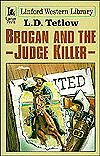 |
1996
|
Brogan and the Judge Killer
|
|
|
|
|
Brogan: Blood Money
|
|
|
Brogan: Fools Gold
|
|
|
Brogan for Sheriff
|
|
1992
|
Brogan’s Mexican Stand-Off
|
|
|
Brogan: Shepherd’s Gold
|
|
1992
|
Brogan Takes Toll
|
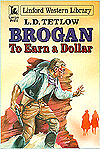 |
1995
|
Brogan: to Earn a Dollar
|
|
|
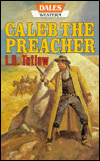 |
1996
|
Caleb
the Preacher
|
|
|
 |
2000
|
Destination Seminole
|
|
|
|
 |
1998
|
Double Take
|
|
|
Publisher: When Caleb Black, preacher and bounty
hunter, comes across two youths and the remains of a burnt-out farm, the
explanation that four vicious outlaws were responsible seems entirely
believable. Caleb goes off in pursuit. However, nothing is what is seems,
and Caleb is faced with some mystifying questions.
|
|
1997
|
Gringo
|
|
1999
|
Grizzly
|
|
Publisher: A group of men who arrive in the
mining town of Beaver Hollow are plainly not interested in looking for
gold. When they lay claim to a long abandoned mine, their quest is both
helped and hindered by an enormous town resident, known as Grizzly.
|
|
2002
|
Jacob's Bounty
|
|
|
Luther's
Quest
|
|
1996
|
Maverick
|
|
|
Publisher: A former U.S. marshal
wrongly convicted of a bank robbery, Clayton McKinley escapes from a
working party. He makes his way back to his home town, determined to
expose the real perpetrators of the crime.
|
|
1995
|
Pioche Vendetta
|
 |
1999
|
Pitiquito Trail
|
|
|
Publisher: Jim Garner is on his way to sell guns
to a Mexican province when the coach in which he is travelling is attacked
by Pablo Morelos and his banderos. When Jim and the others are taken
hostage, help comes from a strange source: Anna, a Mexican woman in
Morelos's camp.
|
|
1998
|
Riverdale Showdown
|
|
Publisher: The Thompson brothers are held in
fear by almost everyone in the small community of Riverdale. Brogan
McNally's intervention to prevent them bullying a young disabled boy makes
the townsfolk realise the Thompsons' can be stopped. Then Frank Thompson is
killed by Brogan, and the boys' father vows to avenge his son's death.
|
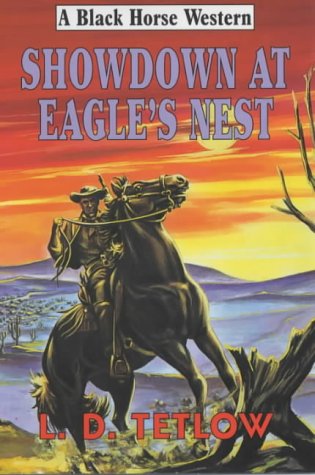 |
2001
|
Showdown at Eagle's Nest
|
|
|
 |
2001
|
Squaw Hunters
|
|
|
 |
2000
|
Storm Over Gold Rock
|
|
|
Publisher: Deputy Marshall Nick Nelson is
escorting captured outlaws when the train derails and the outlaws flee
taking a girl hostage. The outlaws escape, taking a young girl as hostage,
and Mick sets off in pursuit. He follows the outlaws across country,
meeting a strange sect who have acquired the girl from the outlaws. Mick
tracks the outlaws to Gold Rock, a remote and hostile gold rush town.
Besieged on all sides, he faces an almost impossible task with only
determination and his gun skills to help him. Can he win through... and
survive?
|
 |
2000
|
The Bounty Trail
|
|
|
|
 |
1999
|
The Bullfrog Trail
|
|
|
|
|
The Ghost Riders
|
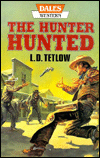 |
1996
|
The
Hunter Hunted
|
|
Publisher: Caleb Black was not only a preacher
but a bounty hunter whose deadly power with the gun was known throughout
theterritory. He arrived to an unfriendly reception at the small town of
West Ridge, carrying with him flyers on two outlaws.
|
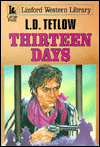 |
1992
|
Thirteen Days
|
|
|
|
1991
|
Town Called Zero
|
|
|
Tetlow, R. Edited by Clara Greed
|
|
1995
|
Implementing Town Planning
|
|
|
Tetlow, R.; National Housing Federation
|
|
1994
|
Not
in My Backyard: A Guide for Housing Associations and Local Authorities
on Special Needs Housing and the Planning System
|
|
|
1996
|
NIMBY and supported Housing
|
|
|
Tetlow, R.; Tuffin, D.;
Barlow, G.; Rawson, D.
|
|
1995
|
Social Housing and the Chartered Surveyor
|
|
|
Tetlow, Richard-John
|
|
1985
|
An Historical Account of the Borough of Pontefract
|
|
|
Tetlow, Robert J.
|
|
1977
|
Visual
resources of the northeast coal study area, 1976-1977
|
|
|
Tetlow, Robin
|
|
1996
|
Rural
Needs in Local Authority Housing Strategies
|
|
|
Tetlow, Roger T.
|
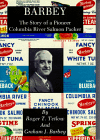 |
1990
|
Barbey: The Story of a Pioneer Columbia River Salmon Packer
|
|
|
|
1975
|
The Astorian;
The Personal History of DeWitt Clinton Ireland,
Pioneer Newspaperman, Printer, and Publisher.
|
|
|
Tetlow, Wendolyn E.
|
|
1996
|
Affinities: Readings in Common
|
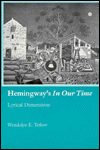
|
1992
|
Hemingway's 'In Our Time'. Lyrical Dimensions
|
|
Synopsis:
Tetlow contends that Hemingway's collection In Our Time (BRD 1925)
"'presents a precisely patterned succession of emotionally charged
units that echo, readjust, and moderate one another ("as does modern
poetry"), all the while moving toward an organic balance.' Four
chapters are concerned with the aesthetic evolution and structures of the
stories and a fifth with the lyric structure of A Farewell to Arms {BRD
1929}." (Choice) Bibliography. Index.
Publisher: Many
scholars consider In Our Time to be Hemingway's finest work, yet the
cohesiveness of this sequence of stories and interchapters has often been
questioned. Hemingway himself, however, had a clear idea of the work's
integrity, as his manuscripts and letters reveal. As he wrote to his
publisher Horace Liveright on 31 March 1925, "There is nothing in the
book that has not a definite place in its organization and if I at any
time seem to repeat myself I have a good reason for doing so"
(Selected Letters, 154). According to Ms. Tetlow, author of this
thoughtful study of Hemingway's In Our Time, the relationship among the
stories and interchapters is precisely analogous to that within a modern
poetic sequence as characterized by M.L. Rosenthal and Sally M. Gall in
The Modern Poetic Sequence: The Genius of Modern Poetry: ". . . a
grouping of mainly lyric poems and passages, rarely uniform in pattern,
which tend to interact as an organic whole. It usually includes narrative
and dramatic elements, and ratiocinative ones as well, but its structure
is finally lyrical" (9). The structure of In Our time, then, is
similar to such works as Ezra Pound's Hugh Selwyn Mauberley and T.S.
Eliot's The Waste Land, works that progress tonally. Looking closely at
the language of In Our Time, Ms. Tetlow pays particular attention to
recurring images and sounds, and the successive sets of feeling these
tonal complexes project. She traces the lyrical pattern in the sequence as
it builds in intensity from denial of fear, suffering, and death in the
first stories and early interchapters, and then traces the progression to
cautious resignation in the latter stories and interchapters. The author
also takes into account the importance for Hemingway of Pound's and
Eliot's aesthetics and demonstrates how Eliot's idea of the objective
correlative and Pound's idea of "direct treatment of the
'thing'" apply to Hemingway's stories and interchapters (Literary
Essays, 3). Opening with a discussion.
Critics: From F.L. Ryan - Choice
{This} interesting study should be welcomed by those
readers, particularly undergraduates, who are puzzled by the
inter-chapters and the 'unstory-like' characteristics of some of the
pieces. With a few serious reservations, one can now think of a unified In
Our Time as one does of {J.} Joyce's Dubliners {BRD 1916} and {S.}
Anderson's Winesburg, Ohio, {BRD 1919}, other notable story collections.
Four reservations may be enumerated. First, the study lacks a rigorous
definition of the nature of lyric genre. Second, it could have offered a
more precise location of the emotions that structure In Our Time. . . .
Third, what is precisely meant by the term 'organic' in the statement
'organic balance?' Fourth, perhaps in the introduction (which should have
been more definitive) Tetlow could have questioned the value of
Hemingway's statement that he presented 'actual life,' a concept that
militates against structural analysis.
From Peter L. Hays - American Literature
Tetlow's readings of the short stories are sound and
occasionally illuminating, especially in their juxtapositions to the inter-chapters,
which we usually read apart from the stories around them. She does
establish connections both thematic and tonal between groups of tales, but
she has not convinced me that In Our Time is a unified, coherent whole.
|
|
|
Tetlow, William L.
|
|
1984
|
Using Microcomputers for Planning and Management
Support (New Directions for Institutional Research, No 44)
|
|
|
Woodberry, Joan, Illustrated by George Tetlow
|
|
1968
|
Come Back Peter
|
|
|
Synopsis: The story of three very different Australian boys.
|
|
|
Zuern, Theodore and Joseph
Tetlow and Peter Schineller
|
|
1983
|
On
Being Church in a Modern Society (Inculturation Working Papers on Living
Faith and Cultures II)
|

|